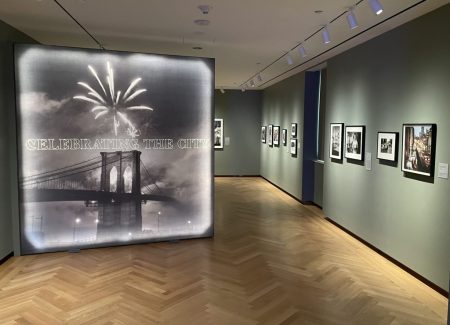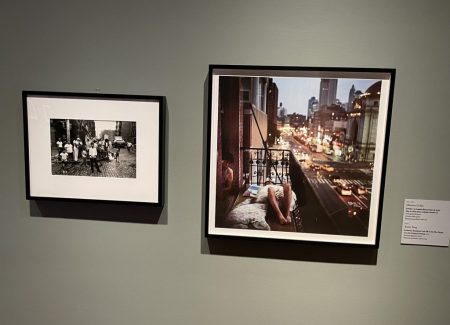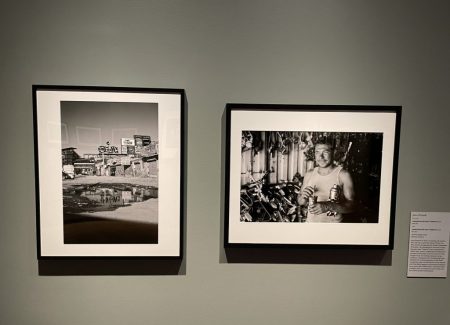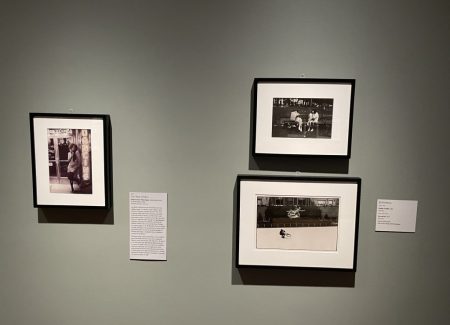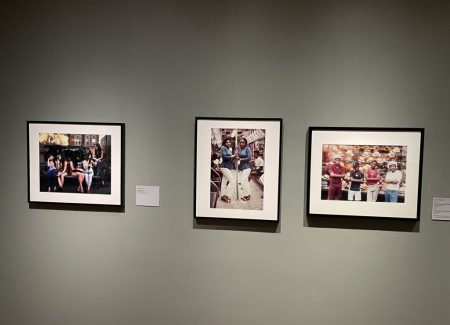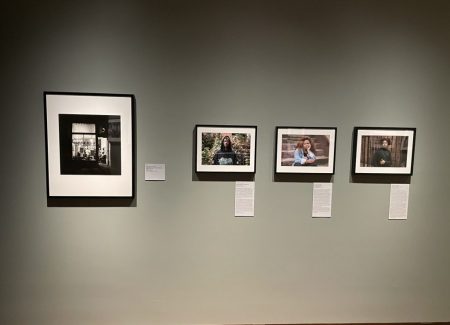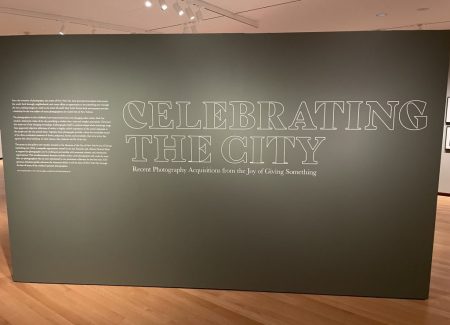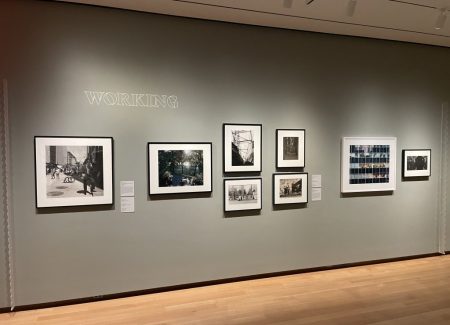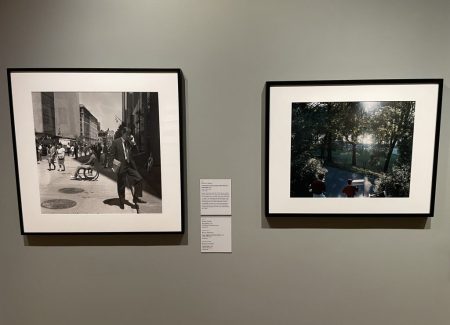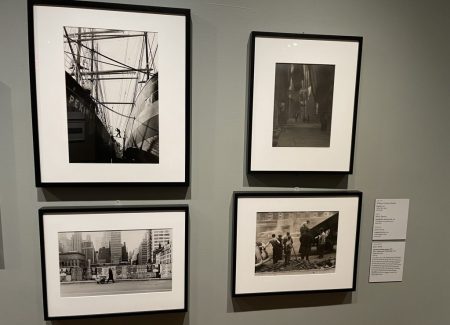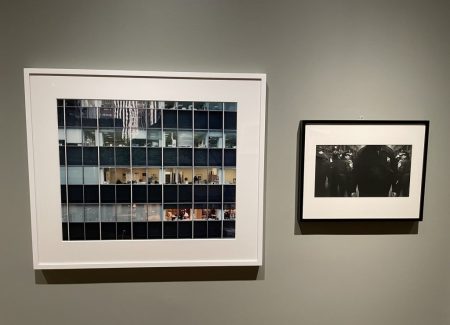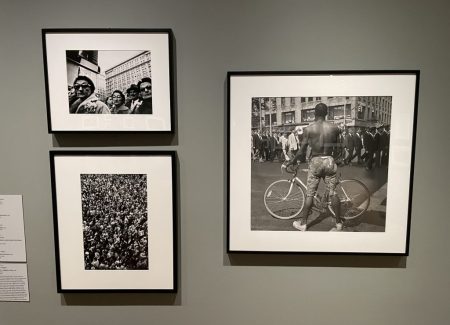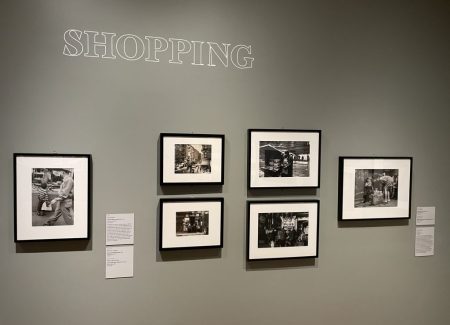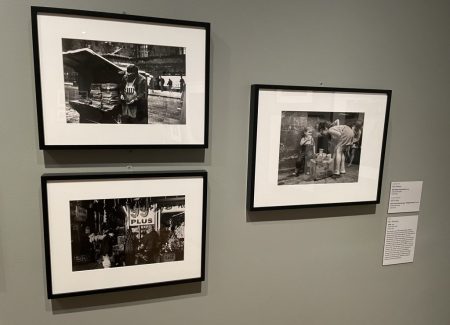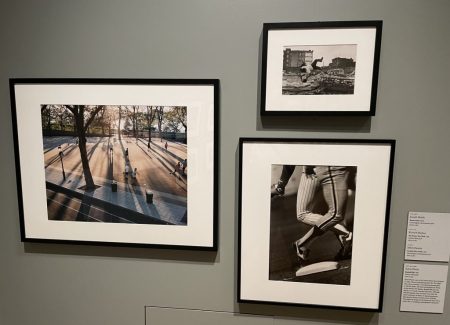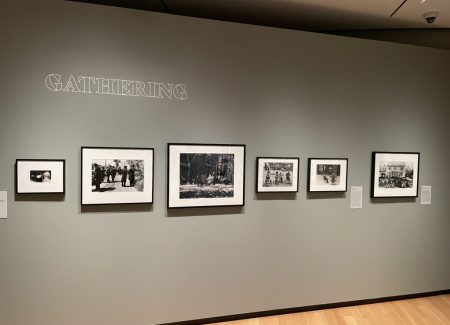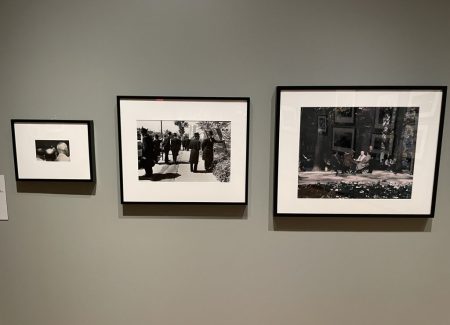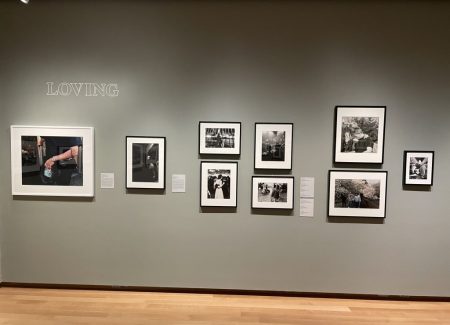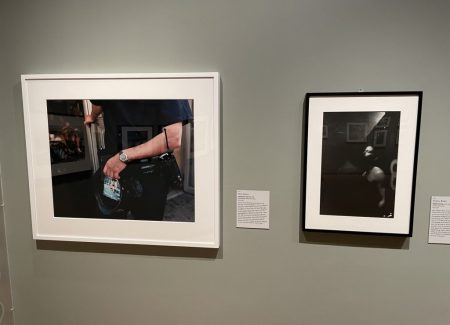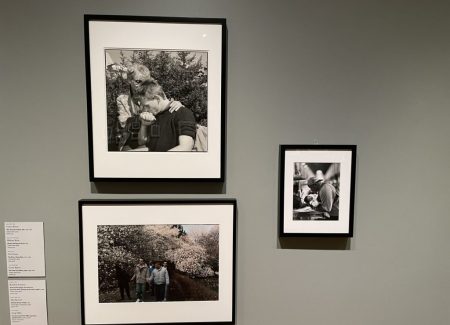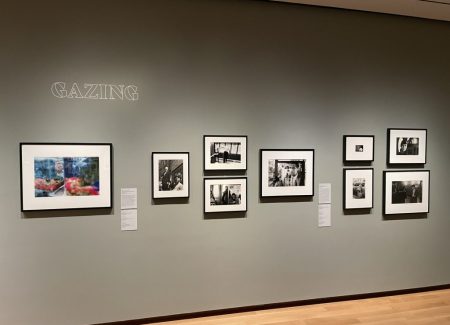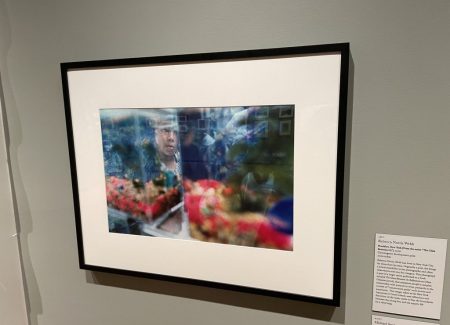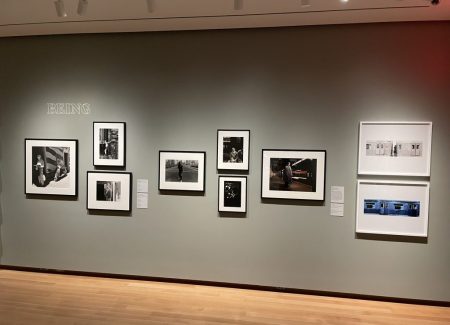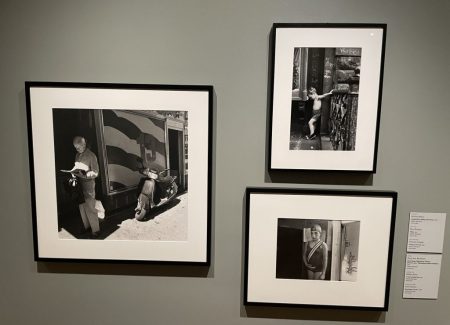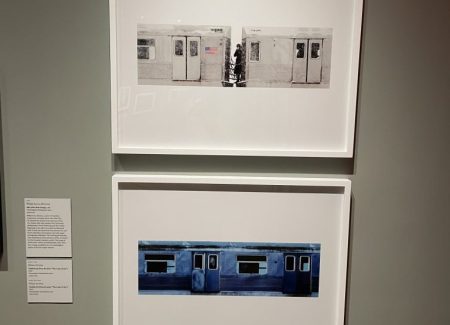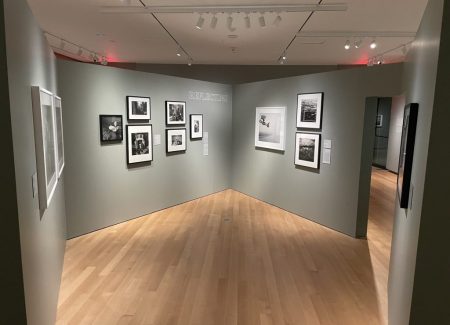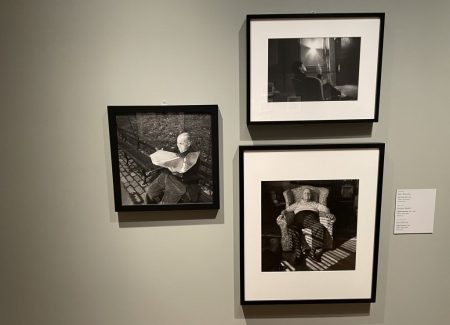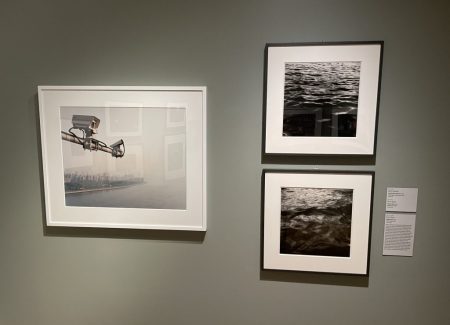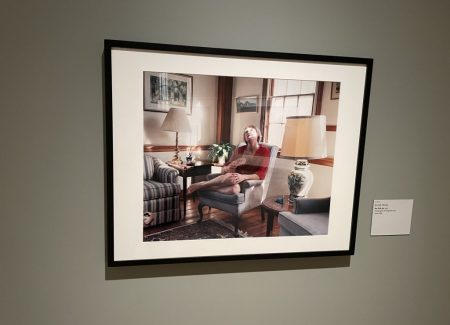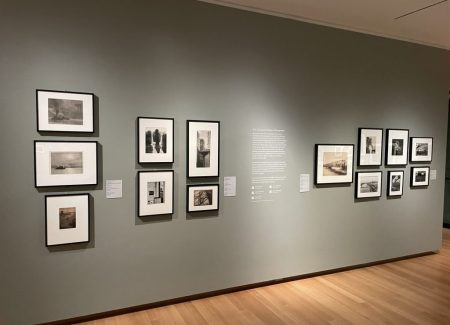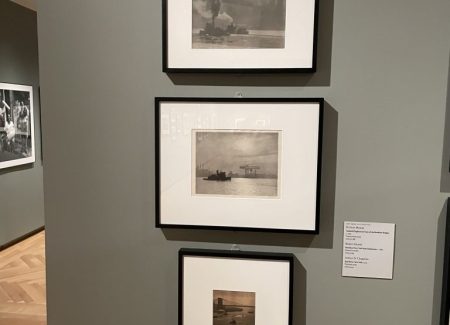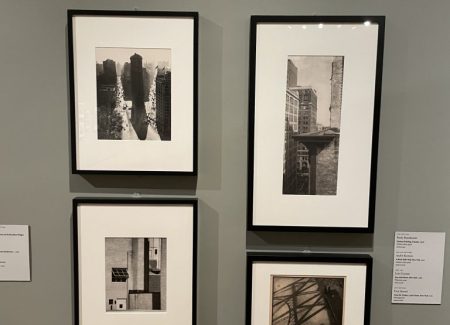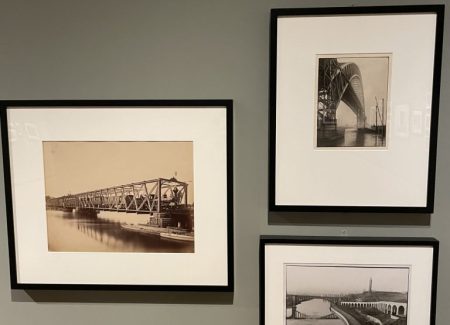JTF (just the facts): A total of 110 black and white and color photographs from various photographers, hung against light grey walls in a large, divided gallery space and the entry area on the third floor of the museum. All of the works in the main gallery space were recently donated to the museum by the JGS Foundation; the works in the entry area are other recent acquisitions and donations.
The following works are included in the show:
Entry
- Bruce Cratsley: 1 enlarged vinyl, 1983/2022
- Máximo Colón: 1 gelatin silver print, 1975/later
- Annie Ling: 1 archival pigment print, 2011
- Jaime Permuth: 2 archival pigment prints, 2010
- Jill Friedman: 2 gelatin silver prints, 1972, 1983
- Lee Black Childers: 1 archival pigment print, 1969/later
- Jamel Shabazz: 2 chromogenic prints, 1979/later, 1982/later
- An Rong Xiu: 1 archival pigment print, 2011
- Pablo Delano: 2 gelatin silver prints, 1994-1995
- Mahtab Hussain: 3 archival pigment prints, 2021
- Jeffrey Henson Scales: 1 gelatin silver print, 1986-1992
Working
- Michael Spano: 1 gelatin silver print, 1994
- Joseph Maida: 1 chromogenic print, 2002
- Bruce Davidson: 1 gelatin silver print, 1996
- Robert E. Gates: 1 gelatin silver print, 1958
- William Gordon Shields: 1 gelatin silver print, 1917
- John Albok: 1 gelatin silver print, 1946
- Mitch Epstein: 1 chromogenic print, 1997
- Andu Novak: 1 archival pigment print, 2003
Going
- Inge Morath: 1 gelatin silver print, 1957
- Michael Spano: 4 gelatin silver prints, 2005, 1994
- Dona Ann McAdams: 1 gelatin silver print, 1985
- Matthew Connors: 1 archival pigment print, 2004
- Ted Croner: 1 gelatin silver print, 1948
- Alfred Stieglitz: 1 photogravure, 1903
- William Klein: 1 gelatin silver print, 1954
- Jesse Diamond: 1 archival pigment print, 1997-2007
Shopping
- Sid Kaplan: 1 gelatin silver print, 1955
- Berenice Abbott: 1 gelatin silver print, 1936
- Walter Rosenblum: 1 gelatin silver print, 1938
- Dan Weiner: 1 gelatin silver print, 1953
- Ed Grazda: 1 gelatin silver print, 2002
- Ken Heyman: 1 gelatin silver print, 1962
Playing
- Joseph Maida: 1 chromogenic print, 2002
- Richard Harbus: 1 gelatin silver print, 1994
- Sylvia Plachy: 3 gelatin silver prints, 1968, 1982, 1988
- Mitch Epstein: 1 chromogenic print, 1997
- Helen Levitt: 1 gelatin silver print, c1945
- Larry Fink: 1 gelatin silver print, 1977
- Paul Himmel: 1 gelatin silver print, c1955
- Ken Heyman: 1 gelatin silver print, 1985
Gathering
- Elliott Erwitt: 1 gelatin silver print, 1955
- Dona Ann McAdams: 1 gelatin silver print, 1978
- Joseph Maida: 1 chromogenic print, 2001
- Joe Schwartz: 1 gelatin silver print, 1940
- Helen Levitt: 1 gelatin silver print, c1939
- Ed Grazda: 1 gelatin silver print, 1985
Loving
- Mitch Epstein: 1 chromogenic print, 1996
- Stephen Barker: 1 gelatin silver print, 1993-1994
- Carrie Boretz: 2 gelatin silver prints, 1995-1996
- William Klein: 1 gelatin silver print, 1955
- Ted Croner: 1 gelatin silver print, 1947-1949
- Rosalind Solomon: 1 gelatin silver print 1988
- Max Kozloff: 1 chromogenic print, 1991
- Greg Miller: 1 gelatin silver print, 1997
Gazing
- Rebecca Norris Webb: 1 chromogenic print, 2000
- Michael Spano: 1 gelatin silver print, 1999
- Carrie Boretz: 1 gelatin silver print, 1995-1999
- Ed Grazda: 1 gelatin silver print, 2002
- Edward Keating: 1 gelatin silver print, 1994
- Eliot Elisofon: 1 gelatin silver print, cf1945
- Helen Levitt: 1 gelatin silver print, 1982
- Saul Leiter: 1 gelatin silver print, c1947
- George S. Zimbel: 1 gelatin silver print, 1954
Being
- Michael Spano: 1 gelatin silver print, 1995
- Ken Heyman: 1 gelatin silver print, 1962
- Christine Osinski: 1 gelatin silver print, 1985
- Dona Ann McAdams: 1 gelatin silver print, 1978
- William Klein: 1 gelatin silver print, 1955
- Louis Stettner: 1 gelatin silver print, c1958
- Philip-Lorca diCorcia: 1 chromogenic print, 1987
- Ethan Levitas: 2 chromogenic prints, 2006, 2008
Reflecting
- Mitch Epstein: 3 chromogenic prints, 1995, 1996, 1997
- Peter Kayafas: 1 gelatin silver print, 1996
- Stephen Barker: 1 gelatin silver print, 1993-1994
- Sylvia Plachy: 1 gelatin silver print, 1986
- Matthew Pillsbury: 1 archival pigment print, 2003
- Robert Frank: 1 gelatin silver print, 1955
- Louis Faurer: 1 gelatin silver print, 1950
- Peter Hujar: 2 gelatin silver prints, 1975
Back Wall
- Forman Hanna: 1 gelatin silver print, c1947
- Robert Desme: 2 bromoil transfers, c1945
- Arthur D. Chapman: 1 platinum print, 1914
- Rudy Burckhardt: 1 gelatin silver print, 1948
- André Kertész: 1 gelatin silver print, 1961
- Lois Connor: 1 platinum print, 1989
- Paul Strand: 1 photogravure, 1915
- John Reid: 1 albumen print, c1870
- Garry Winogrand: 1 gelatin silver print, 1960
- Alexander Allard: 1 gelatin silver print, c1930
- Jan Lukas: 1 gelatin silver print, 1960
- Ilse Bing: 1 gelatin silver print, 1936
- Bruce Cratsley: 1 gelatin silver print, 1983
(Installation shots below.)
Comments/Context: For most art museums, the scope of their mission is an important set of definitional boundaries. A small number of large international art museums are encyclopedic, trying to take in the sweep of human culture from both across the globe and across time. Some museums are more rigidly process-defined, limiting their interest to one artistic medium or another. Others are entirely geographically-oriented, focusing on the art of a nation, or a region. And still others narrow down to a certain time period, the interests of a particular collector, or the work of a single artist.
At its core, the Museum of the City of New York is something altogether different – it’s a museum with a foreground subject matter focus, that includes art as one of its collecting and educational pathways, but by no means its only one. Given its mission to tell the many stories of this city, photography turns out to be a critical medium – not only is New York an art town, but news, documentary, and vernacular photographs provide a foundation for many if not most of the museum’s exhibitions. As a result of this fluidity of use, there is always photography to see at the MCNY, even when there isn’t a specific fine art photography show on view.
The museum’s unique subject matter focus comes through strongly in the curatorial framework applied to a recent donation of photographs by The Joy of Giving Something. JGS is the brainchild of the late collector Howard Stein, a non-profit with wide ranging interests in supporting photography, which has been astonishingly generous is distributing out slices of Stein’s impressively massive photo collection to various museums and institutions. This show celebrates a collection of nearly a thousand prints recently given to the the MCNY by JGS, by selecting a subset of roughly 100 pictures for display.
What’s intriguing about the edit here is that aside from a back wall of photographs featuring images of bridges, roadways, rivers, and a few buildings (which is also used to educate visitors about different photographic printing process), nearly all of the photographs on view feature people (and few pets) – this is a show about the city as the aggregation of its inhabitants, and of the complex and eclectic lives they live together. What’s also exciting is that the JGS gift brought the work of more than 40 new photographers into the museum’s permanent collections, expanding and further diversifying the number of artistic voices preserved and exhibited.
The exhibit is organized into sub-themes, each centered on something that New Yorkers do everyday; it’s a fresh and inclusive way to see this group of images, as it brings the visitor (especially one who hails from New York or the surrounding area) in as an active co-conspirator – these are things we all do in this city, and so the pictures reflect us, at least indirectly. This approach also pulls us back to the content of the images (across a range of decades), rather than a more art-centric mood that would feature the recognizability of the photographer names or the artistic styles.
The show opens with “Working”, mixing images of suited office workers with those of cops in black and pizza delivery boys in red. Standout pictures from this section a 1996 image by Bruce Davidson of a silhouetted dock worker walking between two large ships at South Street Seaport and an earlier 1917 picture by William Gordon Shields which gives a softened Pictorial aesthetic to a man walking underneath the drapery of American flags.
The title of the next section “Going” brings movement to the forefront, with taxis, cars, and trucks featured in images by Inge Morath and Michael Spano, followed by sidewalk views from William Klein, Ted Croner (a slushy Times Square), and Alfred Stieglitz (going back to turn of the century horse and buggy transportation). And a picture by Jesse Diamond of the hopelessly dense crowd at the Macy’s Day Parade reminds us that New Yorkers don’t mind getting jostled and jammed in if there is a parade going on. A section on “Shopping” follows next, with various storefront images from around town, including a bundled up newspaper seller by Dan Weiner (from 1953) and kids bending down to examine a small boy’s sidewalk sale by Ken Heyman (from 1962).
“Playing” offers some clever curatorial image matching. Bent legs provide one theme, connecting jumping boys (from 1994, by Richard Harbus) with the intertwined legs of baseball players (from 1982, by Sylvia Plachy). This is followed by a pairing of open fire hydrant pictures (by Plachy again, and Helen Levitt), and an echo of dancing between Larry Fink’s Studio 54 image from 1977 and Plachy’s image of polar bears swimming at the zoo from 1988. The last pairing in the group features New Yorkers and their dogs (one in the snow, by Paul Himmel, and one in the lake at Central Park, by Ken Heyman).
“Gathering” brings together pictures of groups of people, from Hasidic Jews and older men in the park, to kids on tricycles and Muslim men praying outside. “Loving” then follows with closer in images of gestures and touches between people, including Mitch Epstein’s image of a cop’s hat with an image of his wife tucked inside to various touches and embraces between couples, friends, and family members on the subway, at dances, and in the streets. And Greg Miller’s 1997 image of a father holding his infant child while filling out tax forms at the post office captures the get it done multitasking so common among New Yorkers.
The seeing and being seen of urban life is captured in a section of the show called “Gazing”. Indirect looking takes place in a through-an-aquarium image by Rebecca Norris Webb (from 2000) and a through-a-bus-shelter image by Edward Keating (from 1994). Images of women peering into things we can’t see (a “for men only” carnival vending machine, by Eliot Elisofon, and a taxicab, by Helen Levitt) provide some playful uncertainty, while the simmering heat of attraction takes shape in pictures by Saul Leiter and George S. Zimbel.
The last two sections of the show – “Being” and “Reflecting” – are more introspective, finding New Yorkers momentarily alone in the city or more generally lost in their thoughts amid the bustle around them. A shirtless young boy nestles into the small space between a window and a wall for a moment of weary quiet (in a 1962 image by Ken Heyman), while Louis Stettner captures layers of men in suits and hats stuffed into a commuter train (from 1958). The alone in the city theme then continues through works by Matthew Pillsbury (in the kitchen), Robert Frank (his daughter at the breakfast table), and Louis Faurer (a couple seen through the reflection of a store window).
There is an easy going looseness to the way this exhibit is organized that fits well with the laziness of the summer – the show rewards drifting from topic to topic, without feeling obligated to parse each work methodically, while offering some unexpected serendipity, which seems to match the vibe of a melting pot city that is always shifting and changing. It’s a show that consciously reflects the familiar, which leads to a contagious sense of belonging, and while the photographs here span more than 100 years, they still show us a city that we recognize, and people with which we can identify.
Collector’s POV: Since this is a museum exhibition, there are of course no posted prices. And given the large number of photographers included, we will forego our usual discussion of individual gallery representation relationships and secondary market histories.
